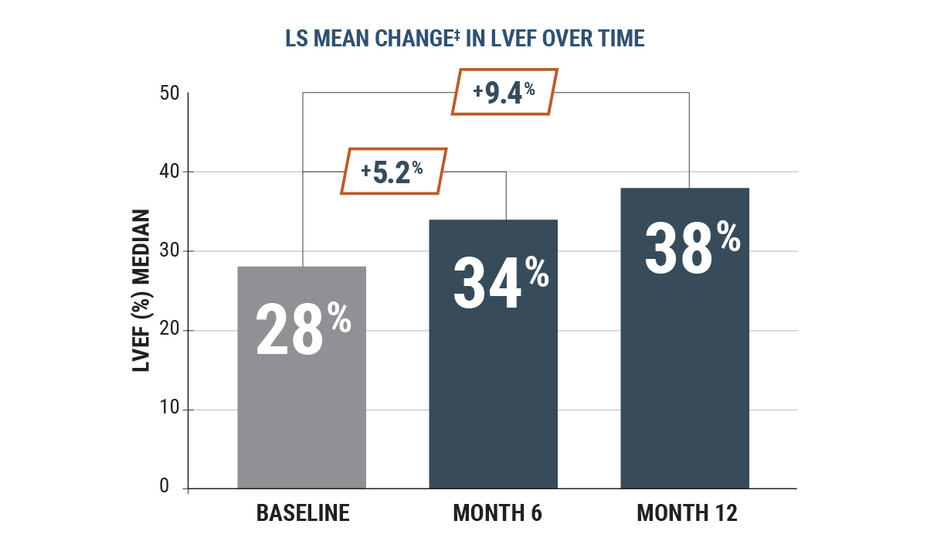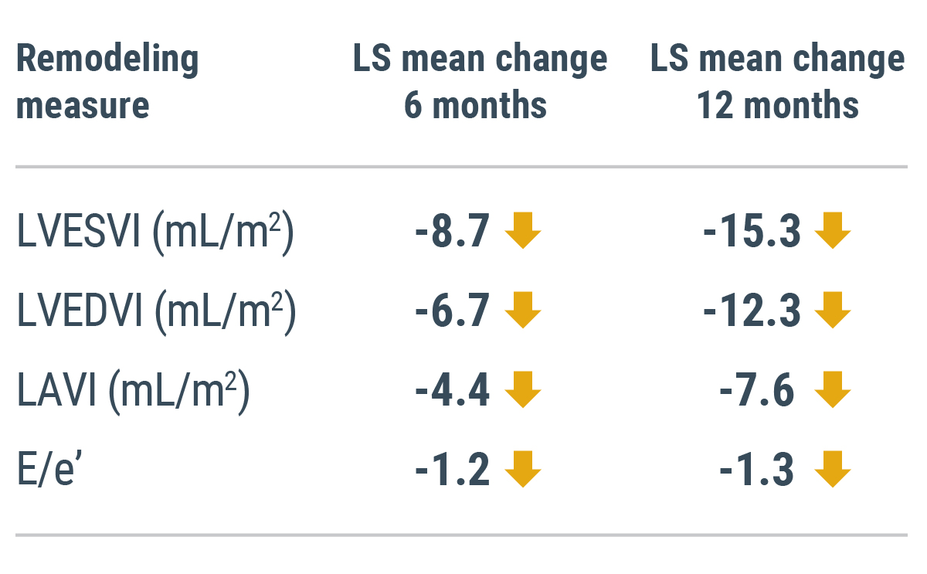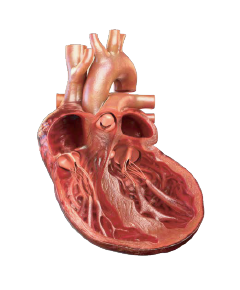In HFrEF,
In the PROVE-HF trial, reduction in NT-proBNP with ENTRESTO® significantly correlated with improvement across measures of cardiac structure and function1
PRIMARY END POINT: Correlation (Pearson r)† between change in echocardiographic remodeling parameters and NT-proBNP at 12 months (P<.001)1
Functional Measures
— E/e': r=0.269
— LVEF: r=-0.381Structural Measures
— LAVI: r=0.263
— LVEDVI: r=0.320
— LVESVI: r=0.405
ENTRESTO improved key echocardiographic measures of cardiac remodeling, including increased LVEF, and reduced NT-proBNP1
Reduction in NT-proBNP was demonstrated at 6 months (35%) and 12 months (37%)1§
The primary end point was the correlation between change in NT-proBNP and cardiac remodeling parameters at 12 months. A secondary end point was the correlation between change in NT-proBNP and change in cardiac remodeling parameters at 6 months.
Lower yet significant correlations were seen from baseline to 6 months.
In PROVE-HF, over 75% of HF patients were previously on an ACEi/ARB before switching to ENTRESTO1‖
*In PARAGON-HF, defined as LVEF ≥45% with structural heart disease (LAE or LVH); median LVEF was 57%. LVEF is a variable measure and the normal range can vary.2
†A Pearson correlation coefficient (Pearson r) measures how strong the association is between 2 variables. It ranges from 1 (exactly correlated) to -1 (exactly inversely correlated).
‡LVEF (%) are median values. Changes in LVEF are LS mean change values from baseline.
§LS geometric mean concentration changes from baseline NT-proBNP to follow-up.
‖Background medical treatment of study patients at baseline included a beta blocker in 757 patients (95.3%), an ACEi or ARB in 602 (75.8%), and an MRA in 281 (35.4%). Of those not taking ACEi/ARB at baseline, 6% were ACEi/ARB naive, and 18.1% had previously been on but were not currently on ACEi/ARB treatment.
PROVE-HF study limitations1
Observational, single-group, open-label design
A broad range of factors may affect NT-proBNP concentrations besides cardiac remodeling
Multiple comparisons may have increased risk of type 1 error
Not all echocardiographic measurements were available at each time point
|
|
|
|
|
| HEALTHY HEART | REMODELED HFrEF HEART1,3-7
| REVERSE CARDIAC REMODELING1,3-7
|






